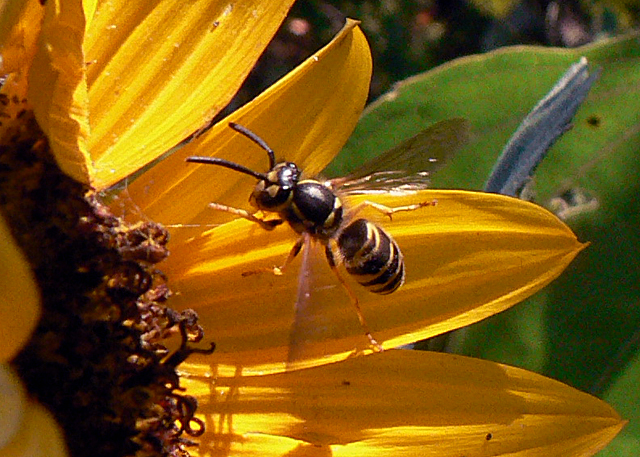Wasp Week Day 1: Eastern Yellowjacket

Eastern Yellowjacket, Vespula maculifrons
Floyd Bennett Field, 2007-09-23
This is a female worker. Color patterns vary on drones and queens.
There are actually several yellowjacket species, and quite a few more wasps that look like yellowjackets. There are even flies that mimic this color pattern to scare away potential predators. Maculifrons used to be the most common “true” yellowjacket on the East Coast and still seems to be around New York City. However, in some areas it is losing ground to the invasive German Yellowjacket, Vespula germanica.
Yellowjackets have an aggressive reputation. This one species may be responsible for as many as half of all insect stings on the East Coast. Among people who are allergic to wasp stings, a single sting may even be fatal, and even one yellowjacket can sting repeatedly when threatened. I wouldn’t approach one this close around its nest. However away from the nest, they’re relatively safe and more likely to fly away than sting you, if they even notice you at all. People’s natural reaction to slap at and swat a yellowjacket that is buzzing around them is about the worst possible thing you could do, and the surest road to being stung. If you stand quietly and don’t panic, they will eventually fly off without injuring you. Unfortunately in many people wasps evoke an even stronger and more irrational flight-or-fight response than snakes do, which may explain why more Americans die every year from wasp stings than snakebite. (That wasps are also more likely to visit us in our suburbs and urban areas than reptiles doubtless also contributes to this fact.)
Like a lot of wasps, the pain and fear they invoke in humans needs to be balanced against the positive benefits in pest control and pollination. Yellowjackets are fairly omnivorous, which is why they’ll visit picnics and scare people; but this also means they kill a lot of crop pests. As long as they don’t nest inside your home or garage, it’s best just to leave a yellowjacket nest unmolested.
